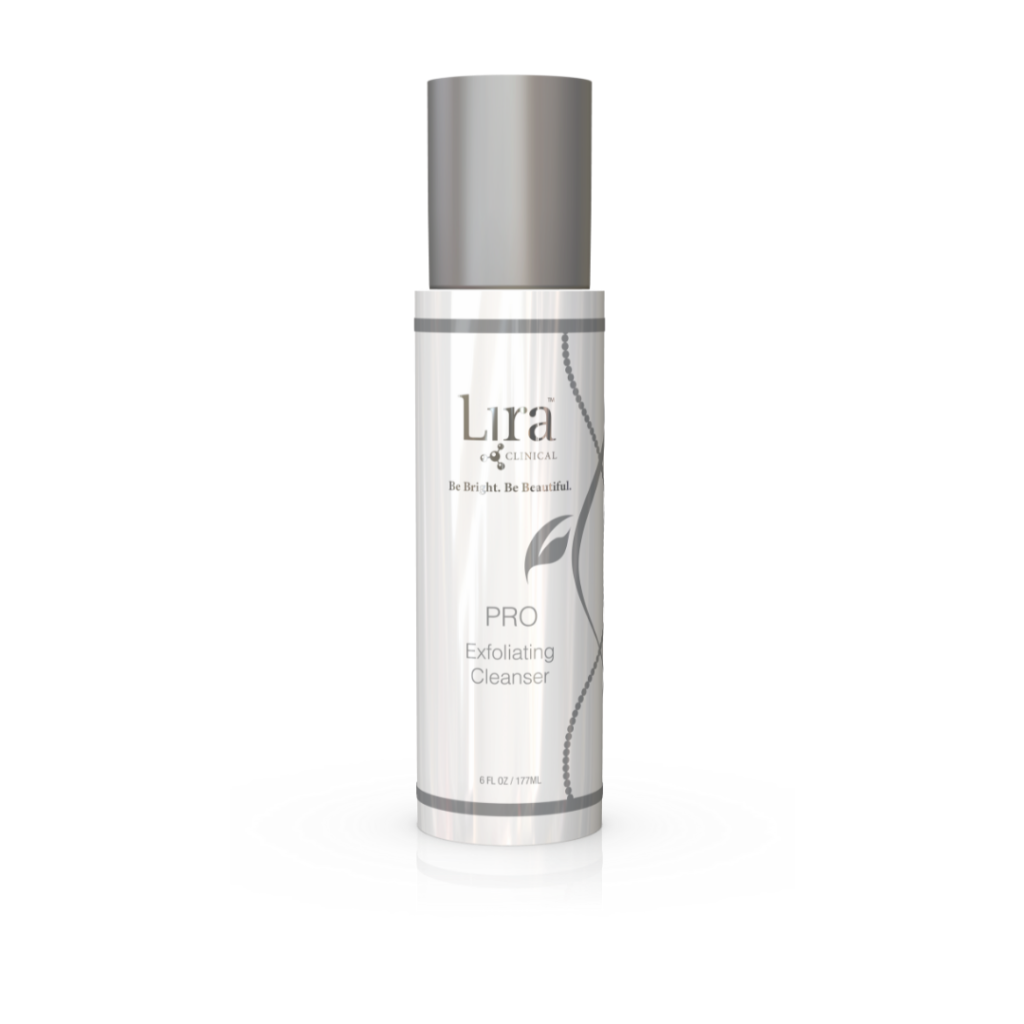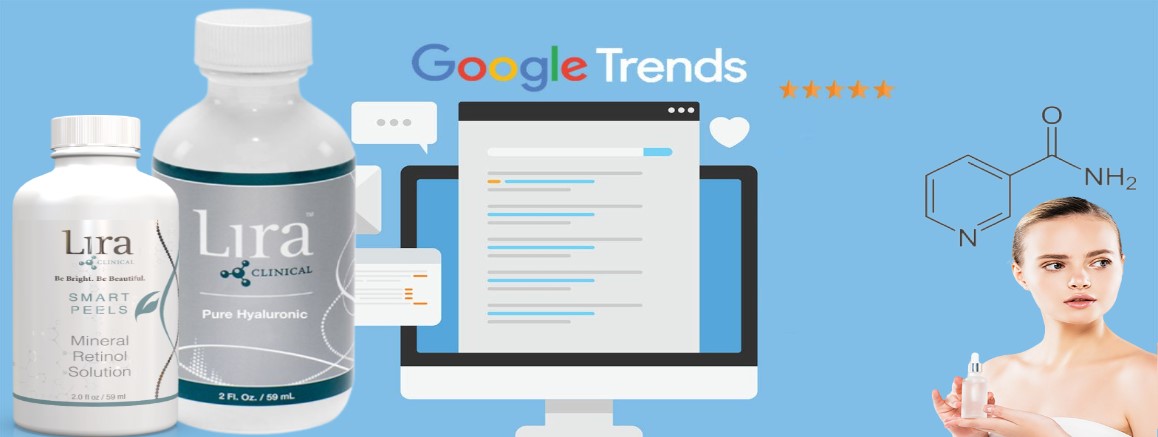Avalon Answers Skin Care Trend Questions For 2022 (According To Google Search Statistics)
December 28th, 2022
2022 has been a year of changes, of awareness, of information, and a celebration of improving not only your skin but product formulations in the industry itself. I have always taken great interest in ingredients and it is interesting to me to see how manufacturers of skincare formulate products.
The top 10 google search skincare questions in 2022 varies. Out of these questions I noticed a trend in ingredient awareness the most. As an aesthetician, I applaud this and look forward to what 2023 brings us for skincare. In the meantime, let me the aesthetician, answer these questions for you below.
What is BHT in skin care?
BHT is the recognized name in the cosmetics industry for butylated hydroxytoluene. BHT is used in a wide range of cosmetic formulations as an antioxidant and stabilizer at concentrations from 0.0002% to 0.5%. BHT does penetrate the skin, but the relatively low amount absorbed remains primarily in the skin (1). What caused a rise in searches with this ingredient is the knowledge coming from clinical studies. One study found that long-term exposure to high doses of BHT is toxic in mice and rats, causing liver, thyroid and kidney problems and affecting lung function and blood coagulation (2). Another study to note found that BHT can act as a tumor promoter in certain situations (3). Some have cited that this product is also a endocrine disrupter, but a study has found this inconclusive regarding the safety of BHA when referring to its endocrine disrupting effect.(4).
Because of the fact that cosmetic formulations use such a low percentage of this ingredient in formulations, this controversial ingredient is considered safe to use. The safety of BHT has been assessed by the Cosmetic Ingredient Review (CIR) Expert Panel (5). This group is responsible for evaluating the safety of skincare and cosmetic ingredients. The Expert Panel reviewed the available data and concluded that BHT was safe for use in cosmetics and skincare products. Personally, I would like to see the industry replace the antioxidant and stabilizing ingredient with a more clean solution. This is defiantly an ingredient to watch going into 2023.
2022’s Buzz Word Ingredient is Niacinamide.
Out of the top 10 questions, 3 of them inquired about this ingredient. All for great reasons, as this 5 star ingredient is safe for pregnancy and breast-feeding, something that retinols have no claim to. Some of the key benefits to Niacinamide mirror the same benefits as retinols. Avalon retails Lira Clinical ICE Refining Masque, Lira Clinical ICE Balancing Lotion, Lira Clinical Solar Shield SPF 30 Hydrating, and Hale & Hush Rare Retinol Serum with Niacinamide.




What is niacinamide in skincare?
Niacinamide is a form of Vitamin B3. Specifically in formulations, this specific form of B3 (an amide) is called nicotinamide [also known as niacinamide]. This is a water-soluble vitamin which we have to get from our diets as our bodies do not make this. Niacinamide is an amide form of niacin, which is a generic name for nicotinic acid (pyridine-3-carboxylic acid)
What is niacinamide good for?
I like this ingredient for my clients whose skin can not tolerate retinols, and who wish to have a product that brightens skin, reduces hyperpigmentation, evens skin tone, assists with reduction of acne, and reduces fine lines and wrinkles.
How to add niacinamide to skincare routine?
You can use this ingredient in both your morning skincare and evening skincare. For results, I tell my clients they must use consistently for at least 3 months. You will find this ingredient in serums, moisturizers, facial cleansers, and creams. This ingredient can be used with hyaluronic acid but not with Vitamin C. If you use Vitamin C products, use Vitamin C in the mornings, and your niacinamide products at night. Niacinamide products can be used with retinol products.
What skin care products should not be refrigerated?
- Oil based products such as facial oils should never be refrigerated. The cold temperatures will cause oil and water to separate and will cause formula and texture changes.
- Clay based products such as clay masks, or clay lip masks should never be refrigerated. The texture will become hard and will cause problems with product use.

Avalon sells Sara Happ Sweet Clay Lip Mask and Lira Clinical’s Mystiq iLuminating Beauty Oil. These are two examples of products that should not be refrigerated.

How long does skin care last?
Skincare products last between 3 months and 36 months typically. The shelf life depends on the ingredients and how the product is formulated. How can you be sure the timeframe? The PAO or “period after opening” icon is an image of an open jar. This PAO will include a month amount, which tells you how long your product is stable for after opening. If a product noticeably changes in its appearance, texture, color, or smell, it is a good indication that the product has expired and should be thrown out even if it has not passed its PAO recommendation. How you store your product and how you use it, will play a roll in this. Do not stick your fingers into the product, as you can transfer bacteria. Instead use a skincare spatula. Do not store products in steamy humid environments, or in direct sunlight. Follow the skincare manufacturers recommendations for storage.

Certain products are required by the FDA to have expiration dates on them. This includes sunscreens and acne treatments that contain active ingredients like benzoyl peroxide and salicylic acid. In addition, single use items like ampoules should be used at the time of opening and the excess should be disposed of.
What is slugging?
Another K-Beauty trend, Skincare Slugging is the final step of skincare where you use a petroleum-based product and generously apply to lock in your skincare products overnight. You would cleanse the skin in the morning, washing off this occlusive product.
Would I prescribe this in any of my clients homecare? Absolutely. Especially during the wintertime, and especially for my clients that have compromised or damaged lipid barriers, and those who dry skin. Who would I advise to stay away from this trend? Those with large pores, oily skin or acneic skin. In addition to this I would not advise using active ingredients like retinols and retinoids and then sealing this in with slugging. It could lead to irritation.
The analogy I use with my clients to describe their skin is like a layered wall. Skin cells can be much like bricks with lipids being essentially like mortar for your wall. Lipids are essential for supporting skin integrity and if your lipid barrier is not preforming well or is healthy, this can lead to damage. Skin burning, swelling, redness, flakiness and itching can all be signs that your lipid barrier is compromised or damaged. Slugging can assist with improving health.
Slugging does not offer any moisturizing benefits and should not be confused as a moisturizing step- it simply seals in your products.
What is BHA?
Two common acid ingredients in skin care products are alpha hydroxy acids (AHAs) and beta hydroxy acids (BHAs). BHA’s are fat-soluble and include Salicylic Acid.
*Both Citric Acid and Malic Acid are considered by some to be both an AHA and a BHA.
In addition, derivatives of salicylic acid, such as beta-lipo-hydroxy acid (LHA), are also considered to be BHAs. LHA is a form of salicylic acid that was developed by L’Oreal and is currently only available in their branded skincare products. I do not recommend this as LHA does not penetrate the skin as easily as salicylic acid with research suggesting that only 6% of LHA penetrates the skin vs 58% of salicylic acid (6).
BHA’s assist with cellular turnover, have exfoliating properties, and reduces excess oil and sebum. Who would I prescribe products to? Clients with acne, grades 1 and 2 as well as hormonal acne. I would also prescribe to clients with skin challenges like texture, or even those looking for anti-aging benefits. Avalon retails Lira Clinical Pro Exfoliating Cleanser, Lira Clinical Mystiq iLuminating Polisher, Lira Clinical Pro Anti-Aging Pads, Lira Clinical ICE Balancing Lotion, Lira Clinical ICE SAL Cleanser, and Lira Clinical ICE Refining Masque.






What does retinol do for your skin?
Retinol is a form of Vitamin A that has many benefits including treating acne, reducing hyperpigmentation, reduction of fine lines and wrinkles, encouraging cell turnover, reducing oil production, and encourages blood flow while encouraging collagen production. Retinols also increase the production of natural chemicals like hyaluronic acid in the skin.
Retinol doesn’t become biologically active until it is transformed into retinoic acid once it’s inside the skin. Use of this ingredient is long term, as it could take up to six months of consistent use to see a difference in fine lines and wrinkles.
What if your skin does not tolerate retinol?
For those with sensitive skin or for those with compromised skin barriers, this ingredient can by drying and cause irritation. As an alternative, Bakuchiol is backed by clinical studies to be very effective for collagen stimulation. This ingredient is also safe for pregnancy and breastfeeding. Another ingredient discussed above is Niacinamide. This all star ingredient is also safe for pregnancy and breastfeeding, and a wonderful alternative.
Is hyaluronic acid safe for pregnancy?
Many studies have been done on this subject and have found that hyaluronic acid for topical use is safe for pregnancy and breastfeeding (7). Hyaluronic acid is found naturally in our tissues, and it’s function is to hydrate and moisturize the skin from within our bodies. By applying this ingredient topically, the function becomes to protect moisture levels on the surface of the skin.
Remember, there is a trick to applying hyaluronic acid topically. You must apply this to damp skin in order for it to work. In fact, applying this to dry skin will have the opposite effect of what your intending by pulling residual moisture from the deeper layers of skin to hydrate the surface. By using a face mist Like Lira Clinical’s Bio Hydrating Mineral Mist or Hale & Hush’s Mist Me to moisten the skin, then applying the Hyaluronic Acid you are able to layer the products for effective skincare.


I hope I was able to answer your questions. Cheers to 2022,
Sarah
References:
- https://pubmed.ncbi.nlm.nih.gov/12396675/#:~:text=BHT%20is%20the%20recognized%20name,remains%20primarily%20in%20the%20skin.
- UNEP and OECD, 2,6-di-tert-butyl-p-cresol (BHT) Screening Information Data Set: Initial Assessment Report (Paris: OECD, 2002), http://www.inchem.org/documents/sids/sids/128370.pdf.
- Baur, A.K. et al., “The lung tumor promoter, butylated hydroxytoluene (BHT), causes chronic inflammation in promotion-sensitive BALB/cByJ mice but not in promotion-resistant CXB4 mice,” Toxicology 169, no. 1 (December 2001): 1-15.
- https://www.ncbi.nlm.nih.gov/pmc/articles/PMC4462476/
- https://www.cir-safety.org/
- https://www.ncbi.nlm.nih.gov/pmc/articles/PMC5300717/
- https://www.ncbi.nlm.nih.gov/pmc/articles/PMC8884185/#:~:text=The%20use%20of%20hyaluronic%20acid,and%20can%20be%20used%20liberally.

